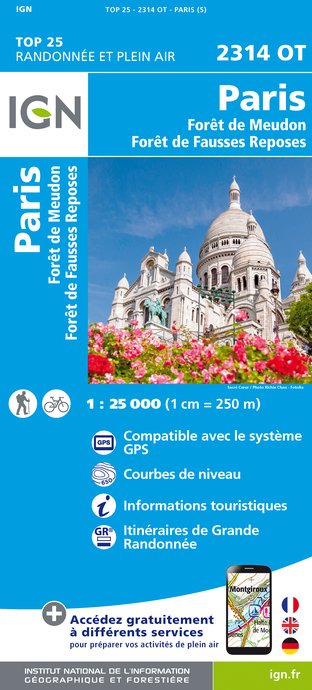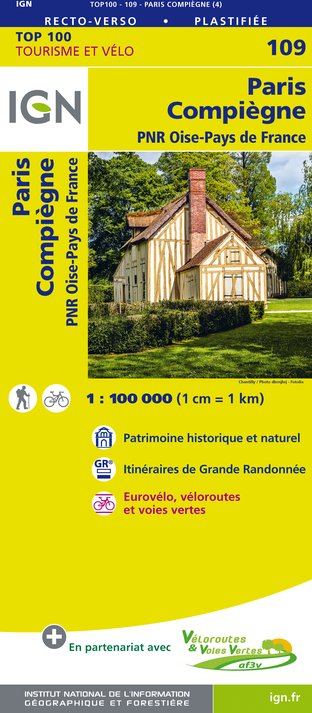Alert
Alerts
"Les bouquinistes", The booksellers

IGN cards













Description
The booksellers of Paris are booksellers of books old and second-hand, present on a big part of banks of the Seine. According to the article 9 of the municipal by-law of October 1st, 1993, signed by Jacques Chirac, boxes used by the secondhand booksellers will have to be of a model approved by the Administration presenting an outside template determined by the dimensions below, for a maximal length of 8,60 m. The tradition of the secondhand booksellers begins near the XVIè century with small traders peddlers. Under the pressure of the booksellers, a regulation of 1649 forbids the portable shops and the display of books on the Bridge "Pont Neuf". The power in the time was rather worried of limiting the not censored parallel markets. The itinerant booksellers are thus, according to period, hunted then reinstated under enjoyments.
In 1859, concessions are organized by the city of Paris and the secondhand booksellers can become established in fixed points. Each is entitled 10 meters away from rail for an annual right of 26,35 F tolerance and 25 F of franchise tax. Openings are made of the rise at sunset. Finally, it is in 1930 when the dimensions of "boxes" are fixed.
Installed on more than three kilometers along the Seine and registered on the UNESCO world heritage in 1991, 240 Parisian secondhand booksellers exploit 900 " green boxes " where are about explained 300 000 second-hand old books and one very large number of magazines, stamps and cards of collection.
Technical Information
Altimetric profile
Starting point
Points of interest
Data author
The Cirkwi brief
Crafted by Balades Fluviales under the visionary Fabienne Lemoine, this itinerary plunges you into the heart of Paris, winding along the Seine where the city’s fabric weaves together historical marvels and the timeless charm of bouquinistes. Imagine strolling, the air filled with stories of yesteryears, browsing through collections that span centuries. A route where each step takes you further into a narrative blend of Paris’ past and the immersive world of books. Ready your senses for an evocative walk that speaks volumes of Paris’ literary soul and architectural grandeur, all curated with an intimate touch by Fabienne.
Brief Technical Overview
This journey spans 5.56 kilometers, transitioning from an altitude of 27 meters up to 37 meters. The journey offers a gentle ascent and descent, within a 25-20 denivelé positif range, showcasing a well-balanced pathway for walkers of all skill levels. These metrics provide an accessible undertaking for enthusiasts seeking a blend of leisurely exploration and subtle physical engagement, making it an ideal route for an admirable Parisian day out.
Seasonal Tips and Safety Advice
To best appreciate this route, wearing comfortable walking shoes is advisable across seasons. Spring and autumn, with their milder temperatures, offer an ideal ambiance for leisurely exploration. Summers bring vibrance, yet the path can be busier; stay hydrated. Winters, while crisp, necessitate warm attire, and the bouquinistes may have shorter opening hours. Always remain mindful of your belongings, as crowded spots can attract pickpockets. The journey, being friendly to walkers of all ages, ensures a safe, enriching experience with precautions.
Exploring Parisian Heritage
Set against the backdrop of the Seine, Paris is a city whose history is as rich and flowing as the river itself. From the historical significance of Pont Marie, among the oldest bridges, to the bouquinistes - a UNESCO heritage emblem - this route encapsulates the essence of Paris. The city, a crucible of cultural renaissance and enlightenment, has preserved its historical narrative through these enduring symbols. Each step along this journey not only traverses geographical landmarks but also time-honored traditions that continue to enchant and educate.
Climate Insights for the Parisian Explorer
Paris enjoys a temperate climate with a general tendency towards mild conditions year-round. The best times for embarking on this walk are late spring through early autumn, where days are longer and generally sunnier. While summer provides warmth and bustling activity along the Seine, spring and autumn afford a more tranquil exploration with cooler, yet comfortable, temperatures. Winters can be chilly and overcast, suggesting a more introspective journey. In any season, Paris’s climate sets a picturesque stage for this historical and literary promenade.



